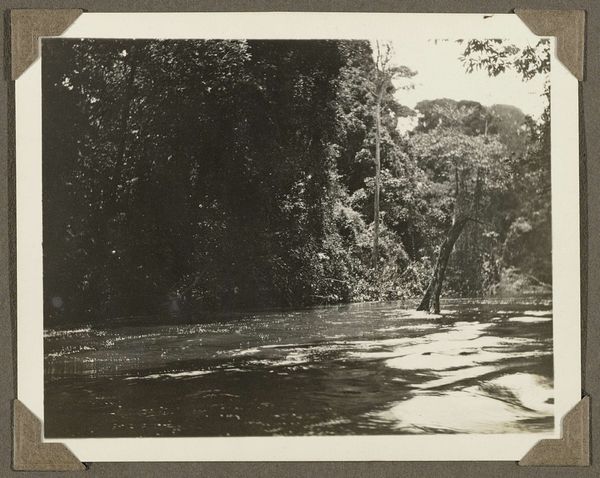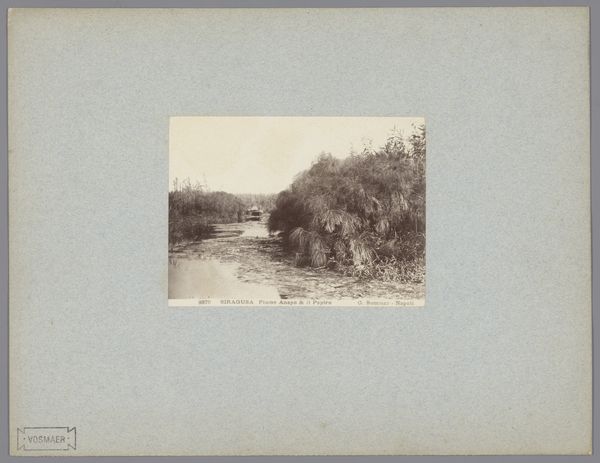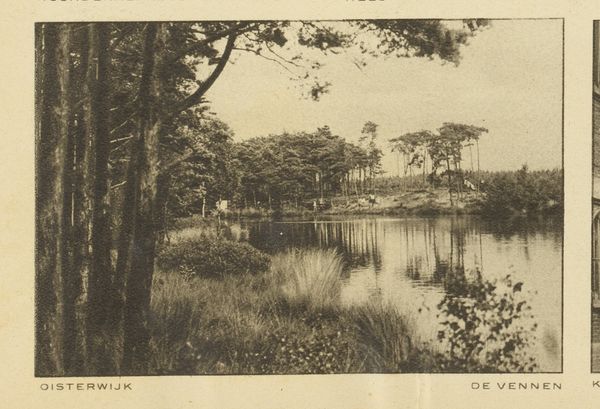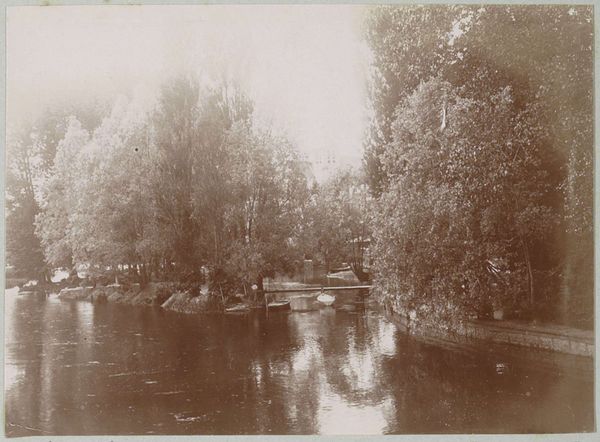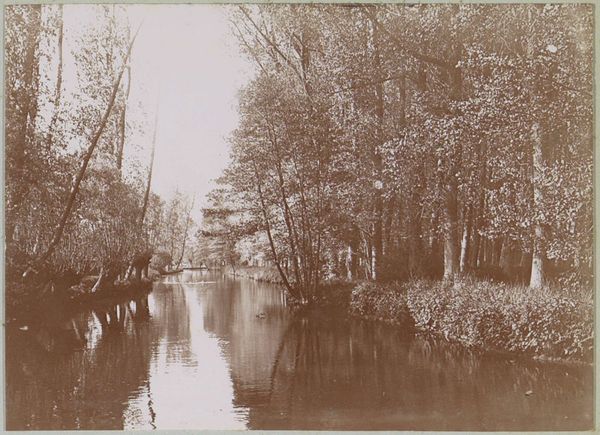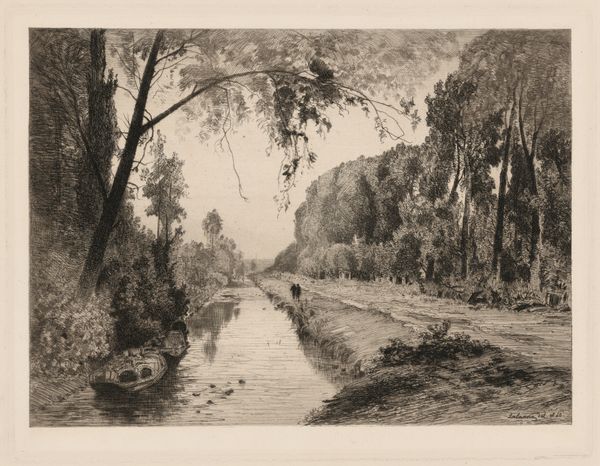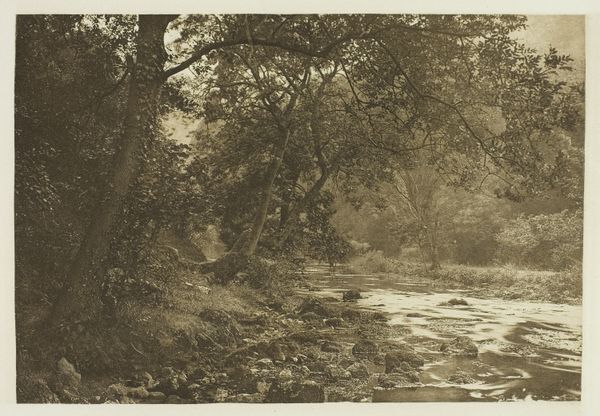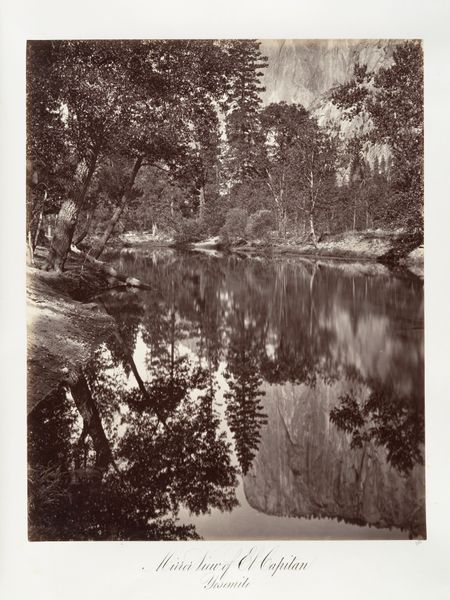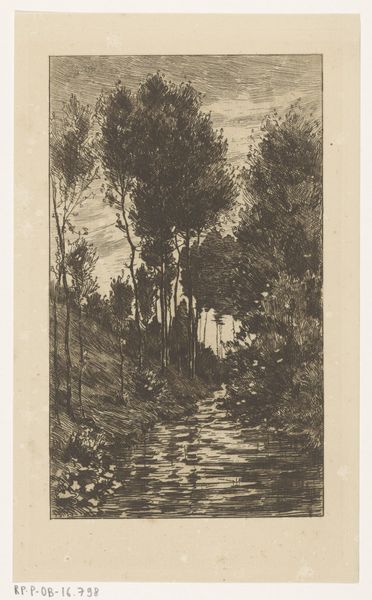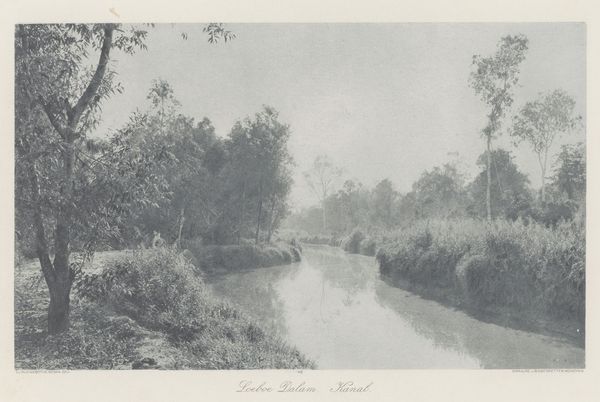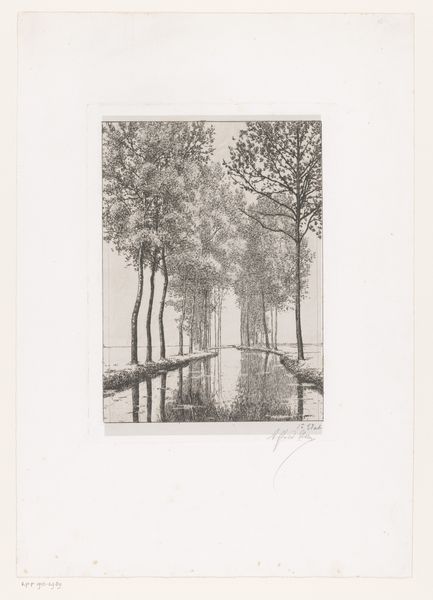
Dimensions: height 161 mm, width 116 mm
Copyright: Rijks Museum: Open Domain
Curator: This etching, "Gezicht op de Geul bij Valkenburg, Limburg," offers a glimpse of the Dutch landscape from before 1915. The artist, sadly anonymous, captures a tranquil scene with the Geul river flowing gently through a wooded area. Editor: It’s remarkably still, isn’t it? The light seems caught, almost suspended, on the surface of the water. The monochrome adds a layer of solemnity and maybe just a hint of melancholy. Curator: Given its existence as a print—likely intended for mass consumption—it's intriguing to consider the etcher's labor and the economics of producing such an image at the time. The choice of etching, a relatively accessible printmaking technique, suggests a desire for wider distribution beyond elite circles. How would a working class person access an image like this at this time? Editor: I find the trees themselves quite compelling. The tall, thin trunks stand like silent witnesses, and the way they frame the river lends a symbolic weight to the flowing water, perhaps signifying time or the passage of life itself. Consider the use of landscape within Dutch Golden Age painting, there's a continuity here despite the shift in medium and era. Curator: Precisely! The very act of reproducing this scene, multiplied through printmaking, democratizes ownership and alters our relationship to the original moment and its symbolic power. We must acknowledge the material constraints the artist works under, the tools, the chemicals and paper used, to reproduce this moment across many individual prints, or even one print. How much does each stage alter the final appearance and texture, when compared with, for example, oil on canvas? Editor: The reflective surface of the water presents a potent symbol: transformation, fluidity, or even the subconscious. Notice the darker, heavier textures towards the periphery draw our eye towards that glimmering focal point. I see that mirroring used across cultures. It creates a dialogue between the conscious and unconscious. Curator: True. It highlights the dynamic interplay between natural resources, labor, and artistic intention, blurring the line between utilitarian object and aesthetic experience. The etcher acts as both artist and factory worker, with implications that complicate any simplistic notion of "art for art's sake." Editor: Considering the river's name – the Geul, in connection with Valkenburg - might evoke cultural memory of battles or prosperity. Either way, the flowing river has served as a passive observer. Curator: Exactly. By examining it’s journey from plate to paper, from production to ownership, allows us a fuller appreciation of its cultural life and broader accessibility, don't you think? Editor: Absolutely. It seems we have both followed the river back to different but mutually informing landscapes.
Comments
No comments
Be the first to comment and join the conversation on the ultimate creative platform.

